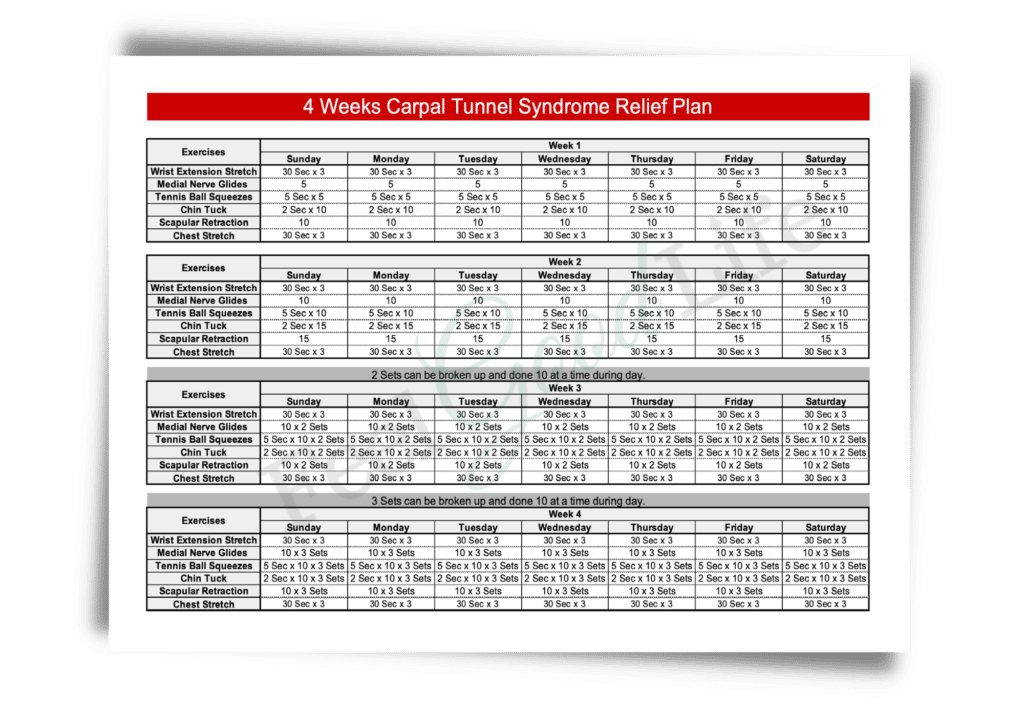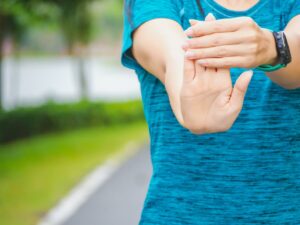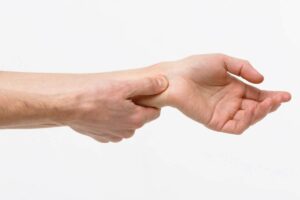Free download: Top 10 Natural & Easy Remedies for Joint Pain from Home. Learn these helpful remedies.
Estimated Reading Time: 6 minutes read
If you have pain in your wrist, or even carpal tunnel syndrome (CTS), do you know it can actually be caused by poor posture? It’s true!
The median nerve is a nerve that travels from your neck, through your shoulder, arm, and wrist and into your hand and fingers.
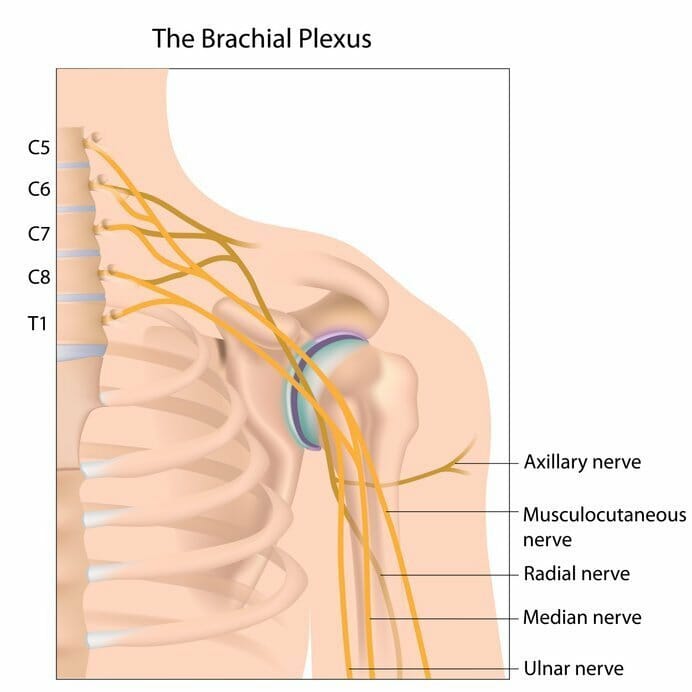
If you’ve been treating your wrist pain or CTS you might be overlooking a helpful strategy to get relief.
Today we have 3 postural exercises that will help relieve wrist pain and CTS symptoms.
In addition to the wrist stretches and exercises we discussed in our previous post on carpal tunnel syndrome, today we are expanding your options with 3 powerful yet simple postural exercises that can help stop wrist pain at the source – poor posture.
Table of Contents
How Does Posture Affect Carpal Tunnel Syndrome?
Slumping and slouching over time can pinch the median nerve where it runs through the neck. You can think of this like a water hose.
If you’ve ever gotten a kink in your water hose, you know that it either slows or stops the flow of water.
It’s a little bit like this with your nerves. The “water” in your nerves is actually electrical signals driven by the flow of sodium ions through the nerve.
If the sodium ions get stuck because part of the nerve is pinched off (either in your wrist or your neck) then the signals can’t reach their destination and you experience pain, numbness, and tingling.
How Better Posture Can Improve Carpal Tunnel Syndrome?
By “unkinking the hose” and allowing the “water” to flow freely again, aka improving your posture and reducing the extent of pinching on the median nerve, you can relieve some of the problems you are having in your wrist.
Postural Exercises for Carpal Tunnel
1. Chin Tucks
The first exercise is called chin tucks and is an isometric exercise, which means we are strengthening without moving.
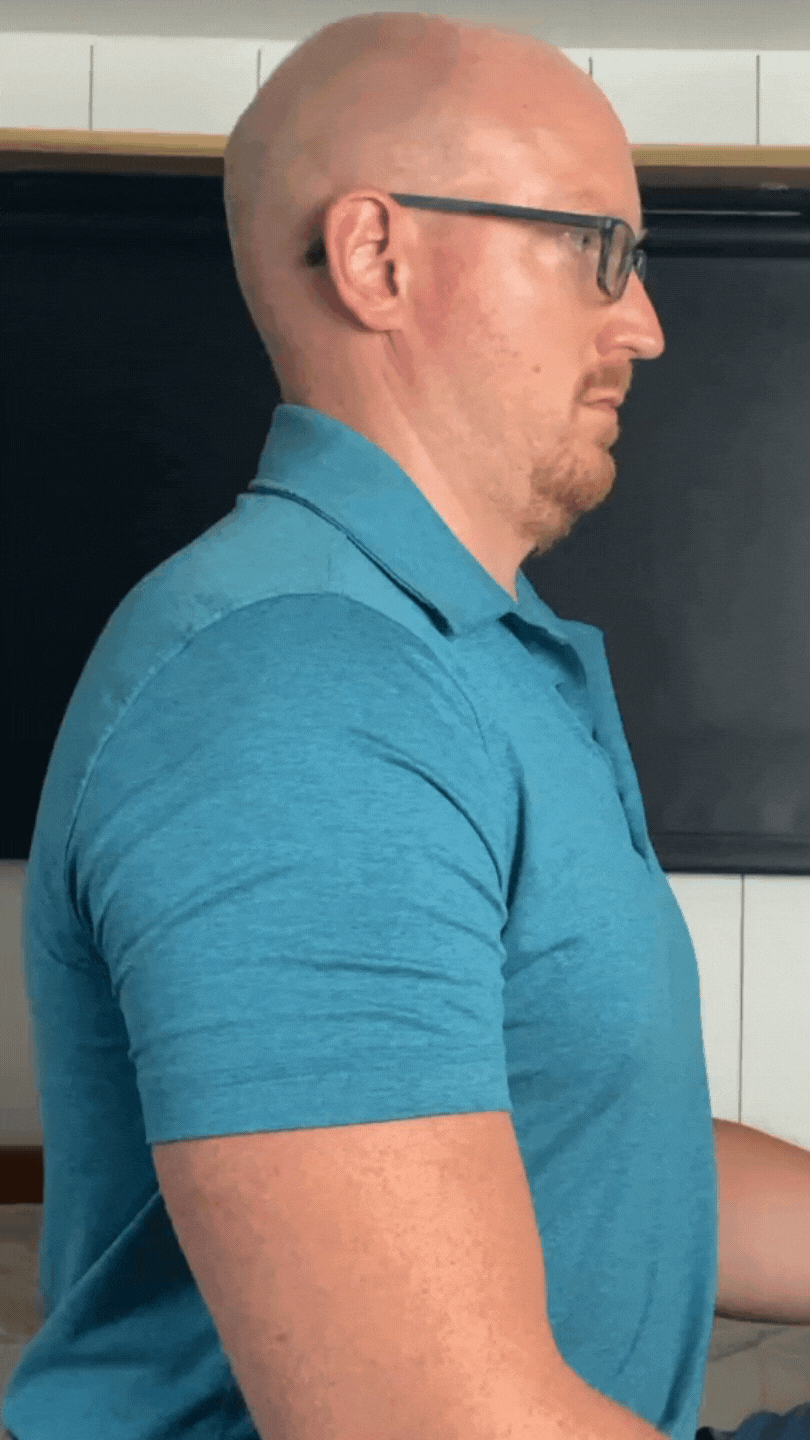
Start by sitting or standing with a neutral posture in your back.
This means you’re not slouched forward, and you should have a generally straight line from the top of your head to the bottom of your back.
Next, tuck your chin inwards toward the back of your neck, as though you were trying to give yourself a double chin.
Don’t tuck your chin down toward your chest, try to move it back toward the spine at the back of your neck.
Hold for 2-3 seconds and repeat for 10 times total.
2. Scapular Retraction
The second exercise is called scapular (aka shoulder blade) retraction.
This is to help return your shoulder blades to the position that is most healthy.
Over time, when we slouch, our shoulder blades round forward and this causes pinching of our nerves.
This exercise makes us aware of where our shoulder blades should be placed for optimal health.

For this exercise, start at a neutral position as in the previous exercise and pull your shoulder blades back, almost like you are trying to get them to touch each other.
Be sure to keep your shoulders down and relaxed, as you may have a natural tendency to hunch the shoulders up.
If it helps, you can visualize having weights on your elbows, keeping the shoulders pulled down. Hold for 2-3 seconds and repeat for a minimum of 10 times.
3. Chest Stretch
The final exercise is the chest stretch. When we make a habit of slouching, the chest muscles get shorter and shorter, especially if we don’t do any stretching or exercises to keep them long.
This can actually start to pull our shoulders forward if we slouch long enough requiring focused effort on our part to keep ourselves in a neutral position.
For this stretch you need a support for your arm. Ideally, stand in a doorway. Bend your arm as if to wave at a friend, so that your hand is in the air and your elbow is bent.

Stand in the doorway and place your hand and forearm on the door frame.
Placing your whole lower arm on the door frame in this way takes pressure off the elbow and allows you to focus the stretch on your chest.
Gently rotate your upper body away from your supported arm. There is only a slight rotation needed to get a good stretch in the chest.
If necessary, you can straighten the arm slightly and place only your hand on the door frame for support.
This does add some stress to the elbow but may be helpful in situations where there is reduced shoulder mobility.
If you need to do this exercise seated, try to use your bed or a couch. Scoot safely toward the edge and sit in the same neutral position as for the other two exercises.
Place your hand on the surface next to you. You can keep your elbow slightly bent for comfort.
Keeping your hand in place, gently rotate your upper body away from the arm that is placed on the bed or couch.
Try to keep your shoulders relaxed and your chest open and not collapsed for the best stretch.
Hold the stretch for up to 30 seconds, or as long as you can without feeling pain.
You may not be able to rotate very far at first, and that’s okay! Your muscles will adapt in short time, and you will be able to rotate further and further with regular practice.
Track Your Progress Toward Carpal Tunnel Syndrome Relief
These 3 exercises will address the “kinks in the hose” that you may have developed and provide relief for your CTS symptoms and even prevent them from recurring.
We have a special free guide that gives you a 4-week progression to help keep you on track to improving your posture as well as relieving your symptoms of carpal tunnel syndrome.
Use the guide to help you remember to do your exercises and track your progression to symptom relief in just a few short weeks.
